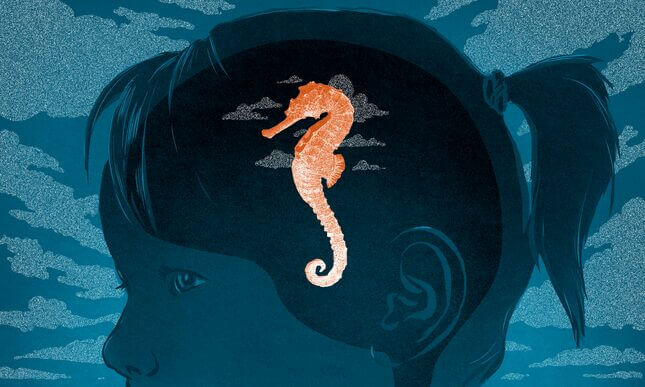The Hippocampground of Your Sweet, Young Life
Latest

For the first few years after I was born, my parents drove a ‘78 Monte Carlo, and my earliest childhood memory is of burning my ass on it in the parking lot of what might have been a Shoney’s.
The sequence of events goes like this: my father, sometime around 1984, pulls me out of the car and sets me on top, probably to reaffix a shoe or to keep me from eating a handful of gravel. Seconds later, I’m screaming, the baby blue metal grilling my thighs, and my dad is yanking me down in a panic. I couldn’t have been much older than two at the time, but the pain remembered is amazingly clear: first ice-cold, then white-hot; all moments on either side unrecallable.
Years later, the family car would play a role in the development of another formative memory. By that time we’d traded in the Monte Carlo for an ‘88 Chevy Astrovan, a vehicle named, one assumes, to call to mind the noble errand of shuttling astronauts to the launch pad, but which more commonly served as a private getaway for soon-to-be-single-moms in need of a place to weep. It was in this van that my friend Michelle and I found pornographic material in the driver’s side door, the glossy pages of which opened our eyes to the thing in life that women really want, which, as we all know, is to squat in platform jellies while a man in a polyester vest shaves our pussies.
The question of who the magazine belonged to was never answered, though I somehow doubt it belonged to my mother, a longtime champion of big ‘70s bush. There’s a righteous kind of pelt you just don’t achieve by letting some clown near your business with a Lady Bic. Judging by the way she hurled the magazine into a chlorine bucket in the back of my dad’s pool truck, I’m guessing it belonged to him, though it was later publicized that “someone had borrowed the van” and left the smut behind, the idiot.
But back to the ass-burning on the Monte Carlo: Why remember such an unhappy event? Photo evidence supports that I had plenty enough good times as a baby, none of which left even the slightest impression. Why can’t I remember, for instance, the day spent having my head poked through old-timey stocks at a farm zoo with my mom and aunt, or the many childhood baths taken in a plastic laundry tub? Why can’t I recall reclining pantless on an upside-down kiddie pool with the family cat—a cat who, by the way, I likewise have no memory of bringing with us when we left Orlando for the Panhandle?
What in God’s name happened to that cat? Did it die, or did we leave it behind? What was its name, and did it love us? Chalk it up to another of life’s great mysteries.
Any day now, my two-year-old daughter is going to start forming the earliest impressions of her own young life. Vladimir Nabokov writes in Speak, Memory: “In probing my childhood… I see the awakening of consciousness as a series of spaced flashes, with the intervals between them gradually diminishing until bright blocks of perception are formed.”
What will my daughter’s bright blocks of perception be? She’s never been cooked on a Monte Carlo, but she’s run head first into the corner of the kitchen island, an event I can assure you was every bit as terrifying. I’d prefer her first memory to be something pleasant, of course, like her parents loving her and feeding her regularly, but I’m not sure her genes will bear out that kind of optimism. If my daughter is anything like me, she’ll have the tendency to remember only rejection and chaos—not bedtime stories or opening presents, not hugs, kisses, or warm reassurances of unconditional love and security (things which, by the way, my mother insists were lavished upon me in goddamn abundance).
Then again she could turn out like her father, who comes from a long line of pathological positive-thinkers. Where I’ll smell a gas leak, Nick will detect a pleasant candle; where I’ll see the inevitability of Lyme disease, he’ll discern “just an ordinary tick bite.” Who’s to say who’s right and who’s wrong?
-

-

-

-

-

-

-

-

-

-

-

-

-

-

-

-

-

-

-

-

-

-

-

-

-

-

-

-

-

-

-

-

-

-

-

-

-

-

-

-








































